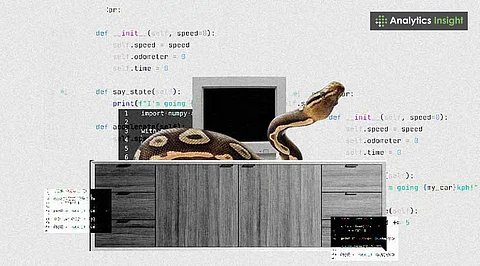

Python tools like Scrapy and Selenium help scrape large or interactive websites easily
New AI tools like Firecrawl simplify complex scraping tasks with smart automation.
Static websites are best scraped using lightweight tools like Requests, Lxml, and Selectolax.
Python is a popular programming language. One of its common uses is web scraping. Web scraping allows collecting data from websites. Python web scraping libraries make it easier than ever to extract data from websites for analysis or automation.
In 2025, many students, researchers, and developers use Python to gather data from the internet. This helps in studies, news work, and projects. Developers often rely on Python Web Scraping Libraries like BeautifulSoup, Scrapy, and Selenium to streamline their data workflows.
Here are some of the best Python tools used for web scraping today.
These are the easiest tools to use. Requests connect to the website and get the page. BeautifulSoup reads the page and finds the needed data. These tools are good for simple websites. They are slow for big jobs, but easy to learn.
Scrapy is used for bigger projects. It can open many pages and collect data fast. It also follows links on websites. In 2025, Scrapy will have new features to handle websites that use JavaScript. It can also fix errors and prevent you from getting blocked by websites.
Selenium is used when a website requires users to perform clicks or scrolling before displaying data. It opens a real browser and acts like a human. This makes it slow, but it works on websites that other tools cannot handle. It is helpful for websites with buttons and scrollable pages.
Also Read: Best Python Libraries for Machine Learning in 2025
These are newer tools. Playwright is faster and works with different browsers. It handles animations and hidden content better. Pyppeteer is the Python version of Puppeteer. It runs without opening a browser window. These tools are good for websites that use a lot of JavaScript.
This tool does two jobs. It connects to websites and reads their content. It is smaller than Selenium or Playwright. It can load some JavaScript, so it works for simple dynamic pages. It is not the best for big websites, but it is suitable for small tasks.
These tools are fast. Lxml supports XPath, which helps find specific data. Selectolax is even faster. These tools are not well-suited for JavaScript, but they excel for static websites that change infrequently.
Some new tools now use AI.
Firecrawl writes scraping code automatically.
ScrapeGraphAI understands page structures better.
Scrapy Impersonate helps avoid getting blocked by making the scraper look like a real user.
Spider Creator builds bots with fewer steps.
These tools help people save time and scrape hard websites.
Every project is different.
For simple websites, use BeautifulSoup and Requests.
For big projects, Scrapy is better.
For websites that need clicks or scrolling, use Selenium or Playwright.
For speed, use Lxml or Selectolax.
For smart features, try AI tools like Firecrawl and ScrapeGraphAI.
Also Read: Most Powerful Python Data Visualization Libraries in 2025
Websites in 2025 are more complex. Many use JavaScript and try to block scrapers. Python has many tools that solve these problems. These tools help students, journalists, and developers collect the data they need smartly and easily.
